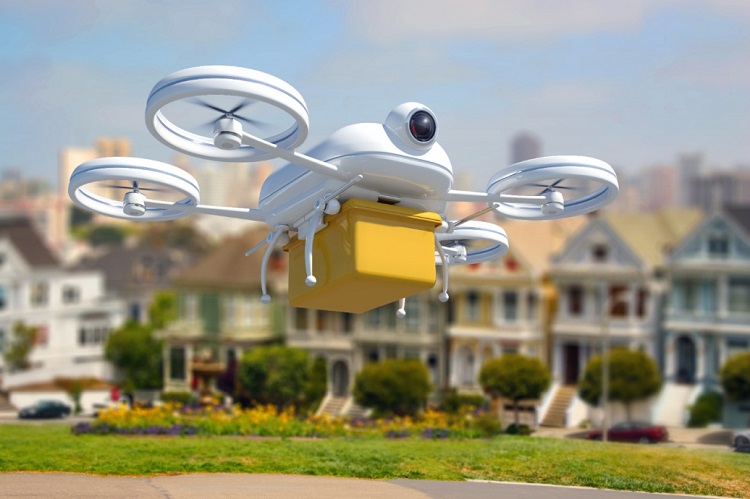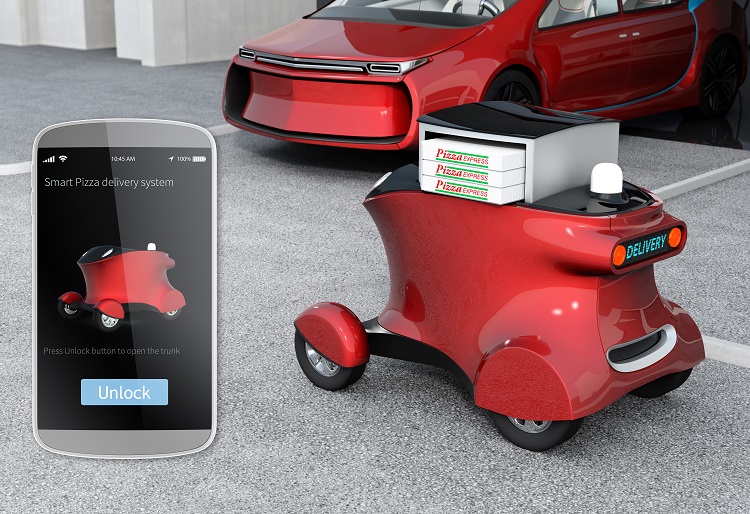What challenges are last mile autonomous delivery manufacturers facing?

How to build tomorrow’s autonomous delivery with today’s technology
From cities in France to college campuses in the United States the autonomous vehicle is becoming a reality. And while they may not be driving people from place to place, they are bringing pizzas to dorm rooms, groceries to customers and packages to doorsteps.
The ‘Consumer Experience’ is rapidly changing. Consumers want products how they want it, where they want it and when they want it. Because of this, the last mile of the shopping experience has gone through more transformation in the past five years than in the preceding twenty. Now it’s estimated that the changes predicted going forward will dwarf the past five years.
The immediate challenges
Consumers are not yet sold on autonomous delivery, but they are watching with bated breath. Most of the stories of autonomous vehicles that the consumer sees are in regards to testing on the road and not always in a favorable light. The last mile delivery autonomous vehicles are occurring without much notice though, unless you’re directly involved with one.
Today, robots enabled by vision systems are being used widely in warehouses and tested in the consumer space where distances are short and delivery sizes small.
The University of Houston uses autonomous ground robots for food delivery. The fleet of robots are designed to deliver goods locally in navigable environments. Students simply use an app to choose the food they want from 11 locations, which include Starbucks, Panda Express and Einstein Brother Bagels, and receive an alert once the food arrives.
While this is a major accomplishment, the challenge of last mile delivery is its inability to navigate beyond short distances, so they are mostly limited to college campuses or small, designated urban areas or even resort towns.

The human reaction to autonomous robots
Autonomous delivery is still very new. The question, and fear, is whether they are used to replace humans or enhance limited human capacity to deliver a better experience to the most valued customers. DoorDash was the first to applaud the ability of robots to help enhance, not replace the human delivery driver. Now, they have over 7,500 employees, not including the countless drivers in the 4,000 cities in which they operate.
Continued investments in smart Infrastructure and communications between vehicle-to-infrastructure and vehicle-to-vehicle will help drive the capabilities of autonomous delivery. As you can see, there is an entire ecosystem that has to support autonomous delivery vehicles transforming the last mile.
Then the big one is that humans must be comfortable with completely autonomous vehicles extending their distance in delivery. You may be comfortable with an autonomous delivery service driving a pizza to your house, but are you comfortable with an autonomous ambulance taking you to the hospital?
There will be a fluctuation point though when people want it versus being afraid of it in their neighborhood. At that point the adoption will accelerate.
Ethan Goodman, senior vice president of innovation at The Mars Agency, observes, “Using self-driving cars to transport people as opposed to product seems further out because of the regulatory and safety hurdles to get over. Nevertheless, Daimler, Fiat-Chrysler, BMW, GM, Ford, Toyota, Honda, Renault-Nissan, Volvo, Hyundai and Tesla all have self-driving cars in the works.”
Let’s take another look at how humans and companies may be impacted by last delivery technology.
As autonomous delivery in the last mile becomes more prevalent, consumers will become more intentional about what they buy. If you’re a company in the middle of the grocery store and sell products no one puts on their shopping list but is something a customer might buy when they see it on the store shelf, it’s important to start thinking about how your products will be purchased in the future.
Iconic shelf space will no longer have the same value in the market if people are no longer walking the aisles of the store. Want to see how autonomous delivery is already changing the last mile of delivery?
Check out this video about six robots already on the streets and sidewalks.
There is another aspect of last mile of delivery worth mentioning: drones.
Google has created a drone that has already received FAA approval and FedEx, Amazon and even 7-11 are testing prototypes or working with companies to bring this capability to their business. Domino’s Pizza even tested drone delivery in New Zealand, Australia, Netherlands and Germany.
There are roadblocks as market tests continue:
- Government regulation
- Consumer confidence and trust
- Costs of service
- Logistics, such as weight, size and distance limits
- Advances in technology
Yet, there is one company that has proven its ability to succeed. Zipline is an innovative company that uses drone technology to deliver medical supplies to remote areas of Ghana and Rwanda. So far, they’ve made over 16,000 deliveries.
Watch their success story here:
The technology to advance last mile autonomous delivery
The key to advancing autonomous, last mile delivery will be software and simulation technologies. Programming, training and virtually testing the robots is critical because they are just as sophisticated as a car or a plane and the human interaction in random environments will have to be understood, analyzed and designed.
In our blog, The first steps toward the fully autonomous vehicle start with the last mile of delivery, we discussed a France-based company, TwinswHeel, that designed and manufactured autonomous droids that benefit urban logistics. This start up met the complex hardware and software challenges of development through comprehensive simulation technology.
Autonomous vehicles, whether on the road or assisting on a factory floor, requires massive validation and verification cycles. The TwinswHeel engineering team had to run millions of scenarios to fulfill the safety requirements. This is an impossible task, unless you do it through simulation.
Through various Simcenter applications, which are part of the comprehensive Xcelerator Portfolio, they were able to successfully simulate and design in a stable, traceable and highly reliable product development environment.
Simulation allowed for multi-domain design exploration, verification and validation at a systems, software and full-vehicle level, as well as enable them to take a scenario, such as a pedestrian rushing in front of the robot and test its capability to manage the obstacle appropriately.
What the last mile delivery looks like in 3-5 years
Overall, the ‘last mile’ is transforming in many ways. How quickly it succeeds will ultimately come down to two factors:
- Consumer driven experience
- Investments in infrastructure
Last mile delivery will likely look like a concierge adaptable to an individual’s needs. It will cater to the consumer and have a high service feel. The service itself will be as important as the delivery of product. The companies that win in creating a service that enables individuals to get what they want, when they need it, whether it be at the home or the office, will compete the best. With all these changes to the last mile, it’s imperative for companies to look at redesigning their supply chains to better serve the consumer as well.
Having autonomous driving vehicles within the next five years, ones that are readily available in communities, will be a stretch to achieve. More likely, there will be autonomous vehicles available in key markets with ‘pockets of brilliance stories,’ similar to what we’re seeing now.
Transformation of the ‘last mile of the retail experience’ is accelerating and autonomous delivery will be forging the future of the last mile of shopping. The biggest challenges for autonomous vehicles that lie ahead will be distance and accuracy in congested areas.



Comments